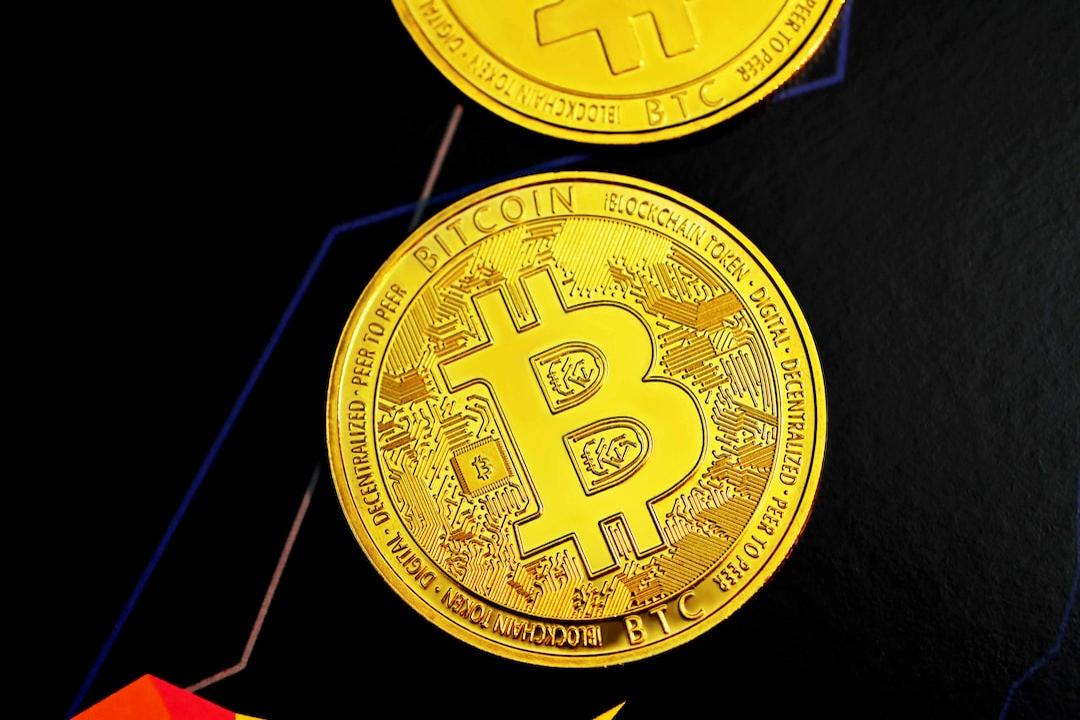Last Week’s Crypto Market: Fluctuating Between Regulatory Easing and Deteriorating Macroeconomic Data
Last week, the cryptocurrency market oscillated between a trend of regulatory easing and worsening macroeconomic data. Despite frequent positive signals from the industry, including the SEC ending multiple investigations, Japan approving compliant stablecoins, and institutions increasing their Bitcoin holdings, rising inflation data, Trump’s impending announcement of “reciprocal tariffs,” and a sharp decline in U.S. consumer confidence have put pressure on overall risk assets.
In this mixed macro environment, market liquidity and trading enthusiasm remain sluggish, and on-chain data also reflect insufficient participation willingness, with a lack of clear catalysts to drive prices higher in the short term. The intertwining of macro and regulatory signals suggests that while the market is not without positives, momentum still needs to be observed.
Regulatory Easing and Industry Expansion: Limited Recovery in Market Confidence
As regulators begin to show goodwill, U.S. regulatory agencies have recently released a series of positive signals. The SEC announced the withdrawal of lawsuits against Kraken and Consensys, and concluded its investigation into Crypto.com. The U.S. Treasury has also lifted sanctions against Tornado Cash, which the market interprets as a phase of easing regulatory pressure. Simultaneously, Japan has approved USDC as the first compliant stablecoin, marking a gradual clarification of the regulatory environment in the Asia-Pacific region.
Institutional adoption continues to expand, with MicroStrategy once again increasing its Bitcoin holdings by nearly 7,000 coins, bringing its total holdings to over 214,000 coins, demonstrating high confidence in the long-term value of Bitcoin. Retailer GameStop has also announced that it will include Bitcoin on its balance sheet, further expanding the use of Bitcoin as a corporate reserve tool.
Traditional financial institutions are also accelerating their layout. BlackRock, the world’s largest asset management company, has launched the world’s first tokenized money market ETF and is expanding its Bitcoin fund product line in Europe; Fidelity is reportedly planning to issue its own stablecoin, directly competing with Circle and Tether. Coinbase is also reportedly in talks to acquire the mainstream options exchange Deribit, expanding its derivatives market layout.
Overall, the easing of regulations and industry advancements provide structural support for the market in the medium term, but in the absence of immediate capital inflows and price momentum, the positive effects still require time to ferment, and market confidence remains relatively limited. Nonetheless, uncertainties in the macroeconomy and geopolitical landscape are weighing heavily again. This week, the market is focused on the rise in U.S. PCE inflation data, the decline in consumer confidence, and Trump’s impending announcement of “reciprocal tariffs,” heightening concerns about escalating trade wars. U.S. stocks and cryptocurrency assets fell in unison, with Bitcoin’s price dipping to $81,295 over the weekend, marking a second consecutive week of fluctuating consolidation.
However, positive signals have yet to translate into substantial capital momentum, with net inflows of stablecoins into exchanges remaining negative, and institutional risk appetite decreasing, leading to a lack of clear catalysts in the market. As Trump is set to announce trade measures this week, alongside the U.S. non-farm payroll report and Fed Chair Powell’s public remarks, the market’s short-term trend is still highly constrained by news and data.
Inflation Persisting, Capital Awaiting: Market Momentum Remains Elusive


Recent macroeconomic data continues to issue warnings to the market. The U.S. PCE year-on-year growth rate rose to 2.5% in February, exceeding market expectations and reinforcing concerns about “stubborn inflation.” At the same time, the U.S. consumer confidence index unexpectedly dropped to 104.7 in March, marking a nearly five-month low, reflecting that high interest rates and living costs continue to erode consumer confidence. Fed Chair Powell is set to speak this Friday, and the market is highly attentive to his latest stance on the pace of interest rate cuts and inflation risks.
Another significant variable comes from Trump’s upcoming announcement of “reciprocal tariffs” on April 2, with the market worried that escalating trade war risks could impact global supply chains and economic performance. Last Friday, the Dow Jones Industrial Average plunged more than 700 points, while Bitcoin fell to $81,295, with overall risk assets under notable pressure.
From a capital perspective, although the total supply of stablecoins has slightly rebounded to $212.2 billion, net inflows of stablecoins into exchanges continue to be negative, reflecting an overall conservative capital stance. According to data, the recent average daily net outflow reached -$1 billion, contrasting sharply with the peak inflow of $15.4 billion at the end of last year. The declining potential purchasing power, coupled with a more pronounced wait-and-see attitude in the market, results in a lack of upward momentum in prices.
On-Chain and Technical Observations: Weakening Market Momentum, Long-Term Holders Stable


Recent on-chain data indicate a simultaneous decline in market activity and capital liquidity. At the same time, both the number of on-chain transactions and average fees have decreased, significantly retreating from the high points at the beginning of the year, reflecting a notable cooling in trading enthusiasm. Last week, the Fear and Greed Index oscillated between 30 and 44, remaining in a “neutral to fearful” range, indicating that investor confidence has not yet seen a significant rebound and that there is still a wait-and-see attitude towards potential policy variables and macro uncertainties. According to CryptoQuant data, as of the end of March, net inflows of Bitcoin into exchanges turned negative, indicating that short-term traders tend to wait or shift to cold wallets for hedging.
For long-term holders (LTH), the holding ratio remains stable at around 70%, indicating confidence in medium to long-term prices; however, short-term trading enthusiasm has significantly declined. At the same time, both the number of on-chain transactions and fees are below the levels at the beginning of the year, reflecting that market participation enthusiasm has not improved.
From a technical perspective, Bitcoin has recently fluctuated within the range of $81,000 to $85,000, repeatedly testing upper pressure before retreating, indicating insufficient short-term momentum. The market is still waiting for confirmation of macro and capital positive signals before expecting to drive the next directional choice, with the overall trend primarily characterized by sideways consolidation.
Summary
Despite the easing regulatory environment and continued institutional accumulation, along with ongoing advancements in infrastructure and product innovation in the cryptocurrency industry, the cryptocurrency market remains influenced by macro pressures and weakening capital flows in the short term, with the overall market in a phase of fluctuating consolidation.
The market currently faces three major uncertainties: first, whether inflation will fall back within the Federal Reserve’s tolerated range; second, whether Trump’s trade policies will trigger a new round of geopolitical and economic conflicts; third, whether capital momentum can return to risk assets. Changes in these key variables will profoundly impact the short- to mid-term trends of Bitcoin and the overall cryptocurrency market.
This week, the outcomes of Trump’s trade policies, the non-farm payroll report, and Powell’s remarks will be crucial for market direction. If inflation and employment data remain resilient, it may delay market expectations for interest rate cuts, leading to continued market caution; conversely, if data weakens and the policy stance turns dovish, it may release new upward momentum for the cryptocurrency market.
Investors should pay attention to the speed of policy implementation and discrepancies in market reactions, avoiding excessive chasing of highs or prematurely building overly leveraged positions, while also monitoring whether on-chain activity and capital flows show structural improvements as an auxiliary basis for observing trend reversals. In the short term, it is recommended to prioritize risk management and wait for clearer signals from capital and policy before adjusting positions. If on-chain momentum and capital structure show simultaneous improvement, it will help stabilize the market further.
About BingX
BingX, established in 2018, is a leading global cryptocurrency exchange, providing diverse products and services such as spot trading, derivatives, copy trading, and asset management to over 10 million users worldwide. In response to market demands, BingX regularly offers historical price trends of mainstream coins like Bitcoin and Ethereum, catering to the varying needs of newcomers to professionals. BingX is committed to providing a trustworthy platform that empowers users with innovative tools and features to enhance their trading capabilities. In 2024, BingX proudly became the main partner of Chelsea Football Club, marking its first exciting foray into the sports world.
Disclaimer: This article represents BingX’s views and provides market information. All content and opinions are for reference only and do not constitute investment advice. Investors should make their own decisions and trades, and neither the author nor BingX will bear any responsibility for any direct or indirect losses arising from investor trades.
Risk Warning
Cryptocurrency investments carry a high risk, and their prices may be highly volatile, and you may lose all your principal. Please assess the risks carefully.

